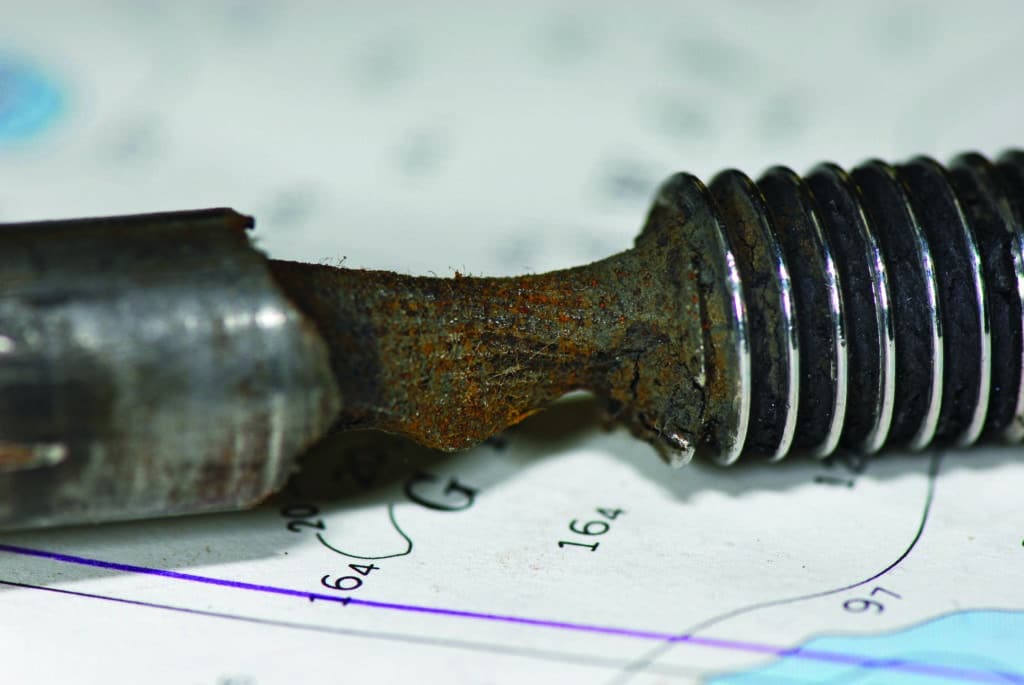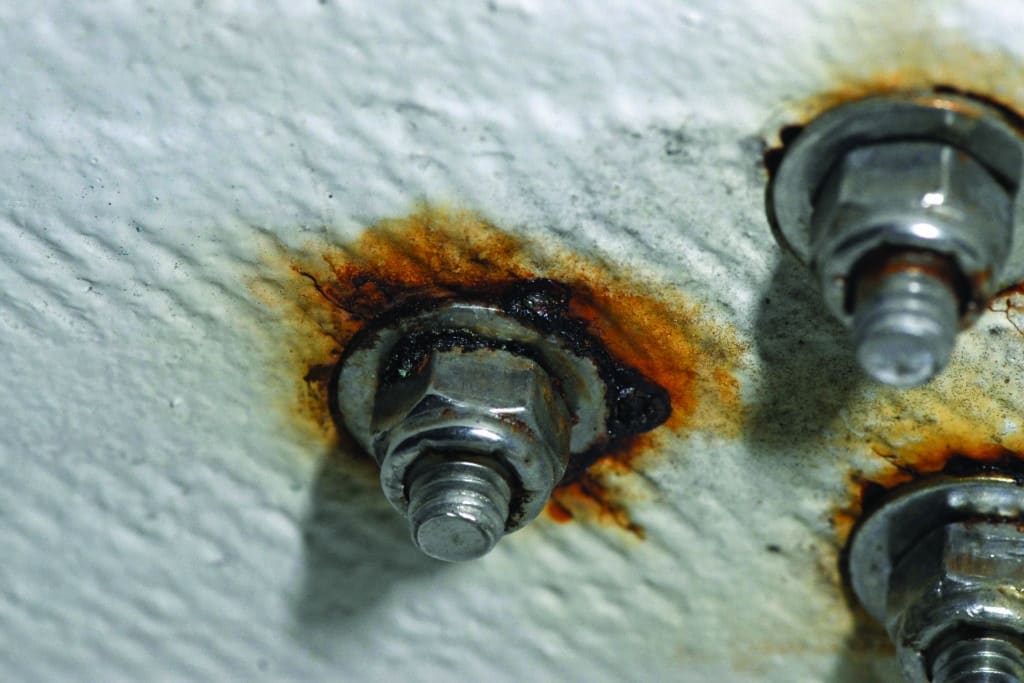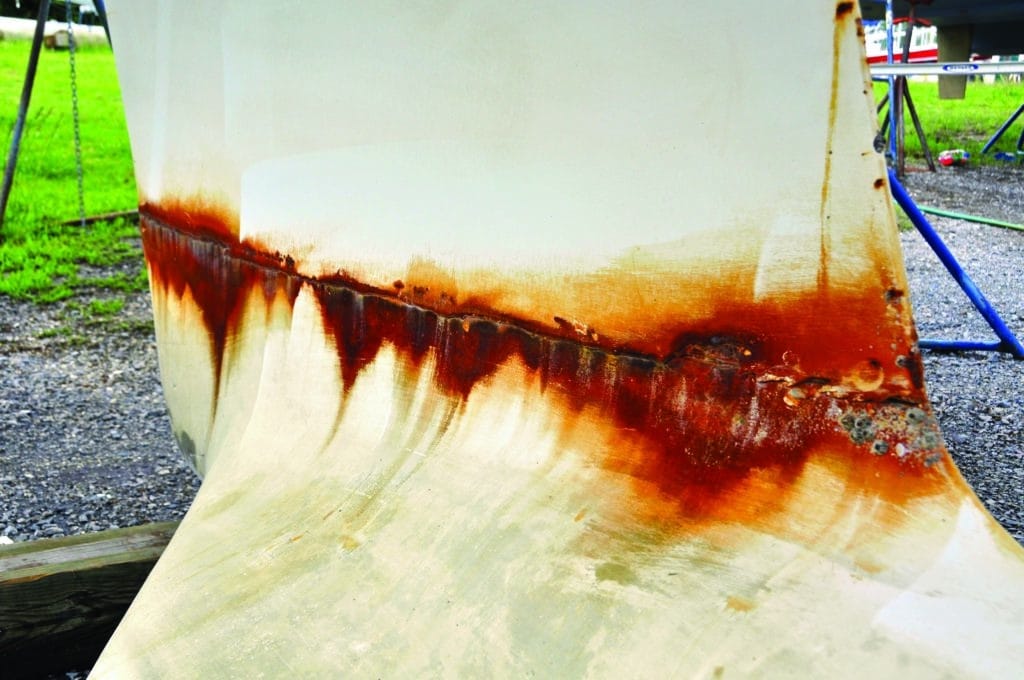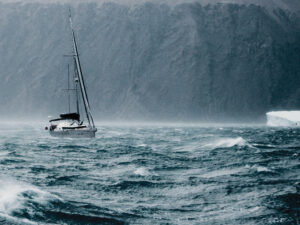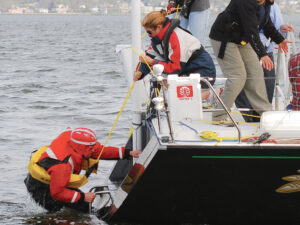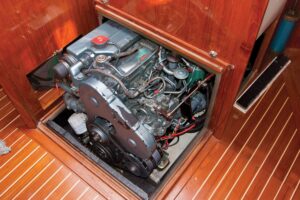In France, stainless steel is called acier inoxydable, which is also the source of its international abbreviation: inox. Fun fact: The handle for the company that manufactures the Swiss Army Knife, Victorinox, is derived from the same abbreviation and the name of its founder’s mother, Victoria.
Stainless steel relies primarily on two elements, chromium and nickel, to attain its legendary corrosion resistance. The American Iron and Steel Institute (AISI) groups the austenitic or marine grades of stainless steel under the “300 series” heading, a designation that should be familiar to most boat owners. Type 304 stainless is sometimes referred to as 18-8, which reflects the percentage of alloying elements chrome and nickel therein; 304 consists of 18 to 20 percent chromium and 8 to 12 percent nickel. Type 316 consists of 16 to 18 percent chromium and 8 to 12 percent nickel, with an addition of 2 to 3 percent molybdenum.
The difference between 304 and 316 is simply the quantity of alloy added to the basic steel starting point. The balance is ordinary carbon steel. That final ingredient in 316, molybdenum, enables this grade of stainless steel to better resist a phenomenon referred to as crevice corrosion. Indeed, crevice corrosion could be considered stainless steel’s greatest nemesis, and a menace to those who choose to use the material in applications for which it’s not suited.
Chrome and nickel, however, do the heavy lifting in preventing corrosion. Chrome, when exposed to oxygen, forms an incredibly tough and resilient oxide film that prevents stainless steel from oxidizing or rusting. That need for oxygen, however, is also the metal’s Achilles’ heel.
As mentioned, the most common variety of stainless-steel deterioration is crevice corrosion. Because stainless steel requires a near-continuous supply of oxygen to replenish its oxide coating, placing it in a wet environment where it’s starved of air nearly always leads to its demise. The range of scenarios in which this can occur aboard a cruising vessel is nearly endless, and includes fasteners used in hulls below the waterline (here, water enters the void between the fastener and the hull, where it is stagnant and quickly becomes oxygen depleted), those employed in cored (and wet) decks and cabins, and those in standing rigging hidden under anti-chafe material.
Crevice corrosion is also the primary means of failure for hose clamps, especially those used in bilges and on stuffing boxes. Another problem area is a stainless-steel alloy propeller shaft, where the stuffing-box packing material prevents water movement and oxygen replenishment, leading to pitting. Once this happens, it spawns yet another process known, not surprisingly, as pitting corrosion, where the differences in electrical potential between the pit and the surrounding metal become self-sustaining.
With crevice corrosion, prevention is the best solution. Avoid using stainless steel where it may be exposed to stagnant, oxygen-depleted water, especially below the waterline with hull fasteners and their components. Silicon bronze, which is immune to these maladies, is a better choice; alternatively, particularly with plumbing, opt for purpose-made glass-reinforced nylon. Where stainless steel must be used below the waterline, consider only the most corrosion-resistant alloy, 316 or 317 stainless.
Steve D’Antonio offers services for boat owners and buyers through Steve D’Antonio Marine Consulting, stevedmarineconsulting.com.
